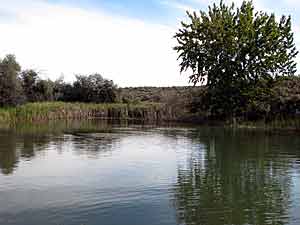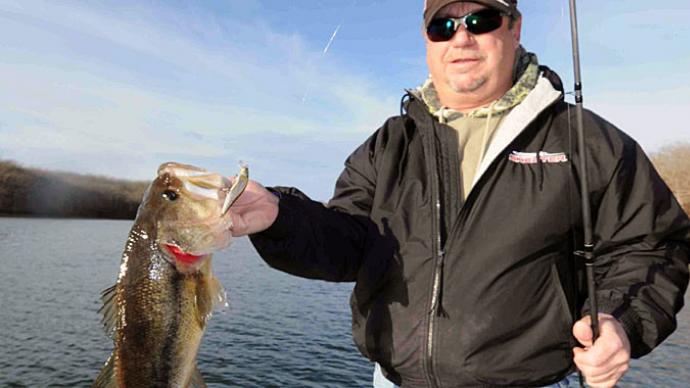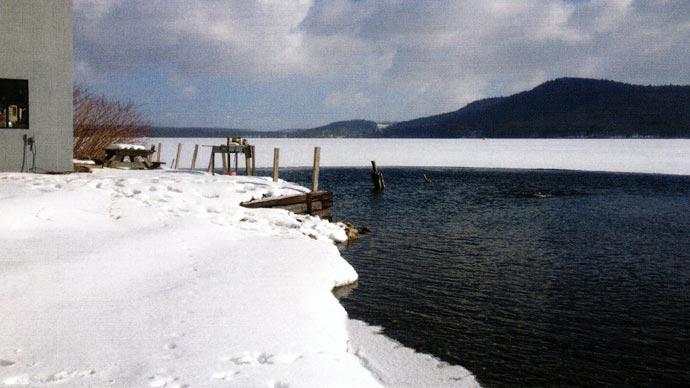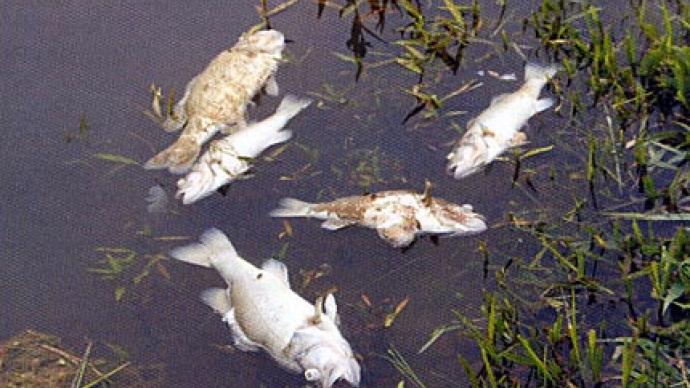
Water is truly the essence of life. As we all know, water covers three-quarters of the earth's surface. In some organisms, up to 90 percent of their body weight comes from water. In humans, up to 60 percent of the total body weight is water; the brain is 70 percent water. Human blood is 82 percent water; our lungs are nearly 90 percent water.
Among the numerous unique properties of water is the fact that it changes density, based on temperature. In effect, cooler water has a greater density, meaning that it "sinks" in the water column, whereas warmer water, less dense, tends to stay at or near the surface.
While other substances are most dense when they are in solid form, water is most dense just before freezing, at 39.2 degrees. Farenheit. As water approaches the freezing point, it becomes less dense. At 32 degrees F, water has expanded in volume from its most dense form roughly 10 percent, and is at its least dense - therefore, ice floats. For pond owners in the North and Midwest, this explains why your lakes freeze from the top down, rather than the other way around.
The impact of changing water density at varying temperature in lakes and ponds is far reaching.
In the summer, the warmer water, as well as much of the dissolved oxygen, is at or near the surface. A sharply defined layer effect or "thermocline" divides the warm surface water from the cold water further down. This phenomenon, called stratification, takes place in nearly all lakes and ponds; it is most pronounced in deeper bodies, especially in lakes with depths of 15 feet or more.
Fall and early winter cooling produces uniform temperatures and dissolved oxygen levels. We refer to this inversion as a "turnover."
Turnovers are the principal sources of mixing nutrients and oxygen into the deeper water. In winter, water temperature becomes homogenous, nearly the same from top to bottom. In lakes that freeze at the surface, the deeper water is actually warmer than the water at the surface, the surface ice insulating the bottom layer from sometimes bitterly cold air temperatures. Come spring, sunshine heats the surface layers, gradually warming the upper until a strong warm-season stratification pattern sets up again, and the cycle is complete.
While this natural cycle is normal and harmless to fish and other aquatic life, summertime "turnovers" frequently result in devastating fish-kills. These most often result from the heavy winds and driving cold rain associated with late afternoon and evening thunderstorms.
In the hottest part of the summer, the thermocline in intensely stratified lakes may be only a few feet below the surface. In these cases, heavy wind and driving rain may be adequate to "break" the stratification, mixing the nutrient and oxygen-rich upper layer with the colder, devoid of oxygen layer beneath. The resulting mixture may contain inadequate dissolved oxygen for fish to breathe.
Pond owners today frequently invest significant time and money into producing and maintaining world-class fisheries; fisheries that are so valuable, that they are worth protecting at all cost against Mother Nature's wrath. Lake turnovers, a result of a sudden mixing of the distinct upper and lower layers of water, can result in sudden and devastating fish kills. Destratification systems can prevent such occurrences.
The theory behind destratification is quite simple: the best way to prevent a turnover is to prevent stratification. In effect, destratifiers do precisely that - prevent stratification from occurring.

There are numerous types of destratification devices. For a variety of reasons, we typically recommend the compressor-driven airlift type.
These systems employ air compressors, positioned on the lake bank, which drive air through a series of synergistic airlift diffusers strategically located at various points on the lake bottom. As millions of tiny air bubbles move toward the surface, they displace water. And good things happen.
The column of water entrained within the bubbles from a synergistic diffuser rises at about a foot per second, moving 2,000 gallons per minute (gpm) from the area above the diffuser.
The surface boil, created by the kinetic energy of the rising water, rises approximately two inches above the surrounding water level. From there, the water rushes outward until its energy has dissipated, sometimes traveling more than 100 feet, depending on temperature, surface tension and wind.
Once the lake surface tension is ruptured in the boil area, potentially harmful gases - including carbon dioxide and hydrogen sulfide - escape from the bottom water and oxygen is absorbed.
There is no potential harm to swimmers, boaters or aquatic life. Better yet, there is no electricity in the water.
One hundred ten-volt compressors are typically housed in sturdy stainless steel cabinets with built-in cooling fans, safely away from the water's edge. The cost of continual operation is frequently less than $30 per month.
It is best to install these systems prior to stratification. If the volume of anaerobic bottom water is greater than 10-15 percent of the lake's total volume, special break-in procedures will be required.
Aside from preventing potential summertime turnovers, the destratification process has several related benefits.
Circulation of water and the resulting increase in dissolved oxygen allows organic matter to decompose much more rapidly, thus decreasing the accumulation of organic sediment or "muck" on the pond bottom. This, in turn, may reduce the growth of nuisance aquatic weeds as well as the offensive "organic" odor associated with some nutrient-rich ponds.
In addition, destratification allows fish populations to utilize the entire volume of a lake during the summer months. Theoretically, this results in an increase in total fish production.
Research has shown that water circulation promotes phytoplankton growth, the base of the food chain in lakes and ponds. In terms of assessing the value of a destratification system for your lake or pond, several factors should be considered.
Typically, ponds with a large volume of deep water are the most subject to turnover-related fish-kills. Shallow ponds are less likely to be affected by a turnover and, in some cases, may not naturally stratify at all. The total volume of the lake as well as the bottom type, shape and contour will determine the precise configuration of a suitable airlift destratification system.
Moreover, these factors combined will determine whether or not an airlift destratification system is a viable and cost-effective option for your lake. A qualified fisheries professional should be capable of assessing your need for destratification as well as design the system that will best suit your situation.
Norman Latona is a fisheries biologist and owner of Southeastern Pond Management, a private lake and pond service company. Southeastern Pond Management has offices in Auburn, AL, Birmingham, AL and Jackson, MS. Norman may be reached by telephone at 888-830- 7663 or via email: nlatona@sepond.com.
Reprinted with permission from Pond Boss Magazine



